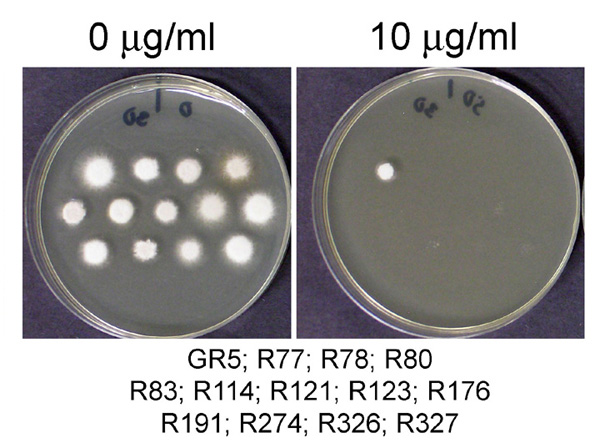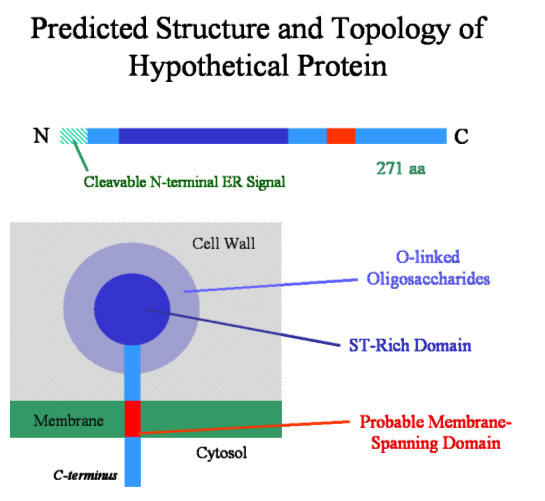

We have identified several CFW hypersensitive strains (designated cal mutants), in which the phenotype is governed by a single recessive allele. The alleles have been ordered into nine complementation groups, representing separate gene loci.
 |
This figure shows the inability of several mutant strains to tolerate the presence of CFW at levels tolerated by the wild type. In the plate on the right, which contains 10 mg/ml of CFW, the wild type strain (GR5 - top row, left) can still produce a colony, while the mutant strains cannot. |
In addition to CFW hypersensitivity, many cal mutant strains also exhibit a number of structural aberrations even in the absence of CFW, including altered branching patterns, sensitivities to elevated growth temperature (see below), and reduced sporulation; all also display sensitivities to further wall-compromising agents such as Echinocandins (inhibitors of glucan synthesis) and Nikkomycin (inhibitor of chitin synthesis).
 |
The calH9 mutant strain is an example of a cal mutant displaying temperature-sensitive spore swelling. The swollen, highly vacuolate cells on the right were grown at 42C, while those on the left grew from spores of the same strain at 30C. |
 |
 |
 |
Three of the novel proteins discovered so far in this work |
Literature:
Hill, T. W., D. M. Loprete, M. Momany, Y. Ha, L. M. Harsch, J. A. Livesay, A. Mirchandani, J. J. Murdock, M. J. Vaughan, and M. B. Watt. 2006. "Isolation of cell wall mutants in Aspergillus nidulans by screening for hypersensitivity to Calcofluor White". Mycologia 98: 400-410.

